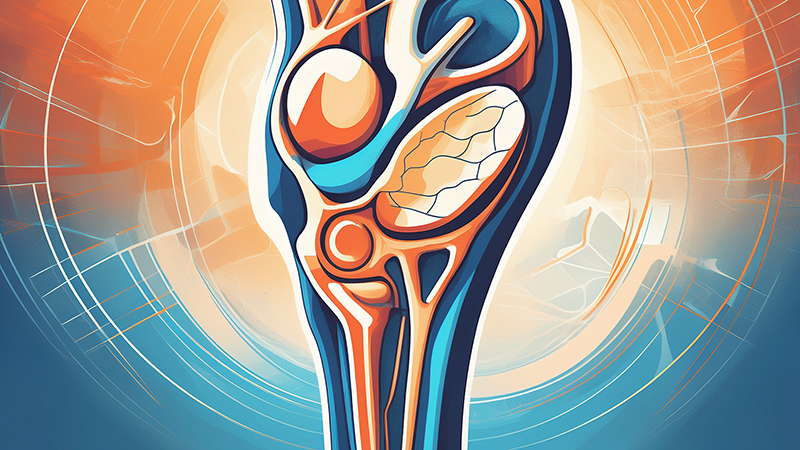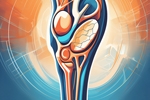
Hip osteoarthritis (OA) is one of the most common causes of chronic hip pain, especially in older adults. This degenerative joint condition occurs when the cartilage that cushions your hip joint gradually wears away over time. As the cartilage deteriorates, the bones in the joint begin to rub against each other, leading to inflammation, stiffness, and pain that can significantly interfere with everyday activities like walking, bending, or even getting out of bed.
Understanding Hip Osteoarthritis
Osteoarthritis is often referred to as a “wear and tear” condition, but there’s more going on beneath the surface. In the hip joint, healthy cartilage acts as a protective layer, allowing smooth, pain-free motion. Over time, or due to injury, overuse, or underlying conditions, this cartilage begins to break down. Without it, the bones create friction every time you move — leading to discomfort, swelling, and reduced mobility.
In some cases, bone spurs (osteophytes) may develop, further limiting movement and increasing pain. While OA most commonly affects older adults, it can also appear earlier in life, especially following injury, repetitive motion, or due to genetic predisposition.
Common Symptoms of Hip Osteoarthritis
- Pain in the groin, thigh, or buttocks
- Stiffness, especially in the morning or after sitting for long periods
- Grinding, clicking, or popping sensations during movement
- Reduced range of motion or flexibility
- Difficulty with daily activities like standing up, walking, or climbing stairs
- Aching even at rest, in later stages
Pain can begin subtly and worsen over time. Early signs may include discomfort after exercise, while advanced OA can result in constant pain, even while resting.
What Causes Hip Osteoarthritis?
Hip OA develops gradually over time, but several risk factors can accelerate its progression:
- Aging – Cartilage naturally wears down as we get older.
- Genetics – A family history of arthritis may increase your risk.
- Previous hip injuries – Fractures or dislocations can damage the joint.
- Obesity – Extra weight puts more stress on the hip joint.
- Repetitive movements – Occupations or sports that strain the hip can wear out cartilage faster.
- Other inflammatory conditions – Rheumatoid arthritis or synovitis can contribute to cartilage damage.
Diagnosing Hip Osteoarthritis
Your doctor may use the following to diagnose OA:
- Medical history & physical exam – To evaluate pain patterns and range of motion.
- X-rays – To reveal cartilage loss, joint space narrowing, or bone spurs.
- MRI scans – For a more detailed look at soft tissues and early-stage cartilage damage.
- Lab tests – Especially if inflammatory arthritis (like RA) is suspected.
Treatment Options for Hip Osteoarthritis
There is currently no cure for OA, but there are many effective ways to manage symptoms and maintain mobility — often without surgery.
Interventional Pain Management
These minimally invasive treatments help relieve pain at its source:
- Corticosteroid injections – Reduce inflammation and provide temporary relief.
- Viscosupplementation – Hyaluronic acid injections improve joint lubrication.
- Platelet-Rich Plasma (PRP) therapy – Uses your body’s own platelets to promote healing.
- Stem cell therapy – A regenerative approach to repair damaged cartilage.
- Nerve blocks – Temporarily block pain signals from the hip.
- Radiofrequency ablation (RFA) – Deactivates pain-causing nerves for longer-term relief.
Physical Therapy and Lifestyle Changes
- Targeted exercise – Strengthens muscles around the joint, improves stability, and increases flexibility.
- Water therapy – Reduces joint stress while allowing safe movement.
- Weight management – Shedding even a few pounds can greatly reduce hip pain.
- Assistive devices – Canes, braces, or walkers take pressure off the hip.
- Anti-inflammatory diet – Focus on foods rich in omega-3s, antioxidants, and whole grains.
Surgical Options (When Necessary)
If conservative measures fail, surgery may be recommended:
- Hip resurfacing – Caps the damaged bone rather than replacing it.
- Total hip replacement (arthroplasty) – Replaces the entire joint with a prosthetic. This is usually a last resort but offers excellent pain relief and restored function.
Conclusion
While hip osteoarthritis is a chronic condition, it doesn’t have to control your life. The key is early diagnosis, consistent treatment, and proactive self-care. With the right combination of therapies — from interventional procedures to physical therapy and lifestyle adjustments — you can reduce pain, improve movement, and get back to doing the things you love.
Precision Pain Care and Rehabilitation has two convenient locations in Richmond Hill – Queens, and New Hyde Park – Long Island. Call the Queens office at (718) 215-1888 or (516) 419-4480 for the Long Island office to arrange an appointment with our Interventional Pain Management Specialists, Dr. Jeffrey Chacko or Dr. Sonny Ahluwalia.
Note: This article is for informational purposes only and should not be considered medical advice. Consult a healthcare professional for personalized recommendations.















